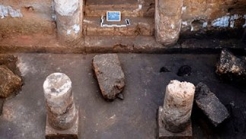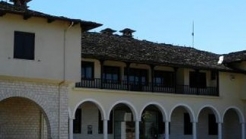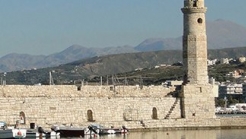

Greece
The Inscription Museum is unique in Greece, and the largest of its kind in the world. In it there are 13.536 inscriptions, mostly written in Greek. Chronologically, they cover the times from the first historic times to the paleochristianic, and most of them come from Greece.
The Inscription museum was founded in 1885, and it still remains in its’ original place. Additions and modifications that occurred to the building during the 1950’s by architect Patroklos Karantinos, ensured new space for the museum, converting it to its’ modern form.
The first batch of collections were the inscriptions that Kyriakos Pittakis collected throughout Athens. To those were added the inscriptions of the old collections of the Archaeological Company – Varvakeiow, as well as findings from the digs at the Athens Acropolis.
The first sorting by name of the collections of the museum was done by King Leonardos, at the end of the 19th – beginning of the 20th century.
In a space next to the museum, there has been arranged a room for temporary exhibitions. Until this day, two such exhibitions have taken place. The exhibition «Inscriptions of a public nature in 5th century Sparta” was organized with the help of the greek inscription company. Furthermore, the exhibition “Dispesrion as a means of civil control” that was organized with the cooperation of the Center of Greek and Roman antiquities of the National Institue of Research.
In the same space, there is a room for scientific conventions and lectures of the Inscription Workshop, that takes place frequently with the cooperation of the Greek Inscription Company.
The Inscription Museum is unique in Greece, and the largest of its kind in the world. In it there are 13.536 inscriptions, mostly written in Greek. Chronologically, they cover the times from the first historic times to the paleochristianic, and most of them come from Greece.
The purpose of the museum, which is a Special Service Department of the Ministry of Culture, is to protect, safeguard, maintain, expose, showcase and project the inscription collections at hand. Amongst its activities is the digitization of the inscriptions, the creation of a photo file, of a special library, and in general scientific files related to the inscriptions, the organization of training programmes for students and people with special needs, and the organization of periodic exhibitions in order to promote inscription monuments.
Those days, the inscription museum hosts the exhibition «Έδοξεν τη βουλή και τω δήμω». The Athenia Democracy speaks through its inscriptions, showcasing eleven inscriptions that are part of, but have not been transferred to the exhibition for technical reasons, the exhibit room of the Greek Parliament.
In the exhibition area, except for the brief info provided in Greek and English on the inscriptions, the visitor can see the ancient texts of the inscriptions that are exhibited in the 2 new rooms that contain the tutoring exhibition in special books.
For the contents of the rest of the inscriptions, it is easy to look them up to the publications in the museum library, thanks to the references that are on each plaque, while general information on the history of the greek writing can be found at the computer located at the entrance of the museum.


Aeges are located on the south side of the Macedonian fields. The name stands for “the place with many herds”. An omen that is said to have been given to Perdikkas


The Byzantine museum is located northeast of the Acropolis (Its-Kaleh) of the castle of Ioannina. It is a two storey building, on the ground floor of which the main exhibition is housed, comprising of findings (sculptures, coins, ceramics, pictures, bema doors, gospels) from the 4th to the 19th century.


Rethymno is the third-largest city in Crete island. The present city is built at the same location with the ancient Rethymno. Evidence for the existence of the city are from the 5th-4th century BC. The Rethymno washed by two seas, north of the Cretan and south from the Libyan Sea .The current population of count around 32,000 inhabitants.
1039 Ε 6061 01515 00